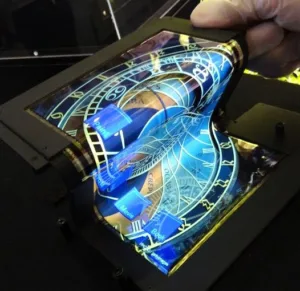
Ever had one of those mornings? I got back from the ECR (radiology event – for medical monitors – report next week) in Vienna late last night and got up early, as is my habit, to write my editorial for the week. However, my ThinkPad PC, which has been working fine, decided to die with a ‘fan error’ during the boot. Ouch! Fortunately, as a geek, I had a can of compressed gas for cleaning and was able to blow out some dust and get it going. I was then able to get online and found that I was still in the last year of the on-site warranty, so I was able to book a visit from a technician to replace the fan on Monday. Phew!
Anyway, this week we bring readers to MDM our report on the annual mobile event that is MWC in Barcelona. It’s an incredibly successful event, to the extent that a simple pass to walk the show floor costs €700 or so. That means that press credentials are really hard to get – there is a huge press facility, but you can imagine the motivation for bloggers and others to avoid having to pay that fee, on top of the costs of hotels and flights. Barcelona is a good place for an event, but the show itself was a bit dull this year.
The smartphone has evolved to such a high point that it is really hard to innovate – a point that was made by LG, which has tried to introduce some new ideas with its G5 modular concept. As I have said before, the fantastic flexible concepts that have been shown in suites and meeting rooms by Samsung’s display division over the last couple of years seem to me to be the trigger for the next “S” curve of technology growth and development. (Think of ‘flip-style smartphones’ and ‘tri-fold tablets’)
The sad reality, though, is that although this kind of flexible display can withstand the bending, they are susceptible to damage from stylii (which are getting more popular and interesting) and other sharp objects. Of course, you might be able to combine a very flexible display with some kind of very flexible glass, but that might mean glass that is too thin. As we report from MWC, Asahi has developed a glass cover with a thinner section for fingerprint sensors, as OEMs are already reluctant to reduce the thickness of cover glass and some have moved from thinner back to thicker.
Here’s a thought. One of the challenges in these displays is that the OLED materials are very sensitive and need “layer” encapsulation. Supposing you could develop microLEDs that were emissive? If you could encapsulate them individually, they could be embedded in a flexible layer that would not need to be so thin or transparent. That would open up a lot of possibilities for robustness. As we have discussed, Apple bought Luxvue, which makes microleds and we report from MWC on Exalos, a European microLED company that is looking for partners.
Bob

